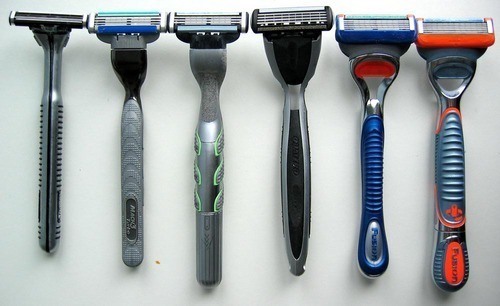
Think your company must innovate to stay ahead of the competition? Imagine being a product manager at Gillette.
Beset by competitive forces from all sides, whether it's rival manufacturers looking for an edge or fickle consumers looking for the next best shave, the Procter & Gamble subsidiary is forced to innovate -- or go dull.
In its mandate to "innovate or perish," the company this month introduces the Fusion ProGlide. The new, multi-blade razor features seven new "innovations." Whether this is the next -- or the last -- step in shaving innovation remains to be seen.
The real lesson offered by a close inspection of Gillette is how shavers are just part of its current role in men's grooming. Worldwide, the company's grooming and toiletry products are part of a larger strategy that keep Gillette ahead of the competition -- and a model of innovation.
Still, a question emerges from among Fusion ProGlide's batch of "improvements." Can innovation go too far? Can innovation -- solely for innovation's sake, or to encourage more consumer purchases under the expectation that something's "new and improved" -- be simply too much? Where do meaningful innovations end -- and the hype begin?
A little history: shaving traces its history back to the dawn of civilization. In 3000 BC, early metalworking led to the first blades for removing body hair. "Modern" shaving arrived in 1800s England with the creation of the first straight steel razor. This soon was followed by the first "hoe-type" razor that puts a single blade perpendicular to the handle. The time line continues and by the 1880s, the safety razor was invented.
By the 20th century, a salesman named King Camp Gillette helped create the first double-edged, disposable safety razor blade. High quality and low priced, he soon sold 51 razors -- and 168 blades. By the 1980s, dual-blade razors are introduced. By 2005, razors feature five blades.
Grooming innovation seems beset by an "enough is never enough" mentality. Case in point: the Fusion ProGlide. According to its marketing materials, the product "incorporates a series of unique technologies that address critical areas" for a better shave and incredible comfort and performance. These include "low cutting force blades" that are thinner, with finer edges and "an advanced low-resistance coating." It has a blade stabilizer, a "Snowplow Comfort Guard" to channel excess shave prep (lather?), and a "microcomb" to guide hair to the blade. Its "enhanced lubrastrip" is larger than previous strips -- and is infused with mineral oil and lubricating polymers. It has a "Precision Trimmer," a comb guard to better align long hairs, and new rinse-through slots. The handle has been redesigned for getter ergonomics.

Shaving has come a long way. But has it gone too far?
Interestingly, a new innovation at a company like Gillette doesn't mean "out with the old." The company still sells its Sensor XL. And while the Fusion franchise is its top revenue producer (ProGlide retails for $22.99 for six cartridges), its Mach 3 line tops the charts in unit sales, a company executive says.
Would-be innovators can learn a lot from Gillette. Its expansion into other areas of men's grooming -- not just shaving -- keep it strong against the competition.
The Process of Innovation
Then there's the process of innovation itself. Every new product begins with consumer research, says Damon Jones, the company's Global Communications Director. Studies tell the company consumers want a better, more comfortable shave. The company tested the ProGlide with some 30,000 men.
"We measure our success in the real world, not just in the laboratory," Carl P. Haney, Gillette's Vice President or Research & Development, said in a statement. "Our deep understanding of men, their emotional motivations, their daily grooming rituals and the physiology of their skin enables us to deliver meaningful benefits, not technology for technology's sake."
Some question the value of innovation versus the marketing machine that drives it. The company spent millions on pre-launch promotions. Gillette is giving away 1,000 free ProGlide samples via its Facebook page -- just to get people to try the product and hopefully spread the word.
I'm wary of the hype. It's possible that seven new innovations are worth the money (full disclosure: I've not tried the Fusion ProGlide). But while Fusion was Gillette's largest revenue generator, did the fifth blade really add consumer value vis a vis comfort? The product was criticized by industry followers for being more smart marketing than genuine innovation. To be sure, innovation comprises much more than radical or breakthrough moves. But marketing noise can make consumers suspect.
Which begs the question: with seven innovations packed into one razor, have consumers seen the last innovation from the shaving category? Not likely. In its quest to lead the pre- and post-shaving category, Gillette will continue to watch the competition (they "keep us on our toes as well," Jones says). And it will talk to consumers. "That's how we'll come up with next innovation and the evolution into men's grooming, as opposed to shaving," he adds.
Criticism and hype notwithstanding, I admire what Gillette has and continues to accomplish. Its deep-pocketed R&D and marketing support is unrivaled in the industry -- and sets and example for any innovation-minded company to follow.